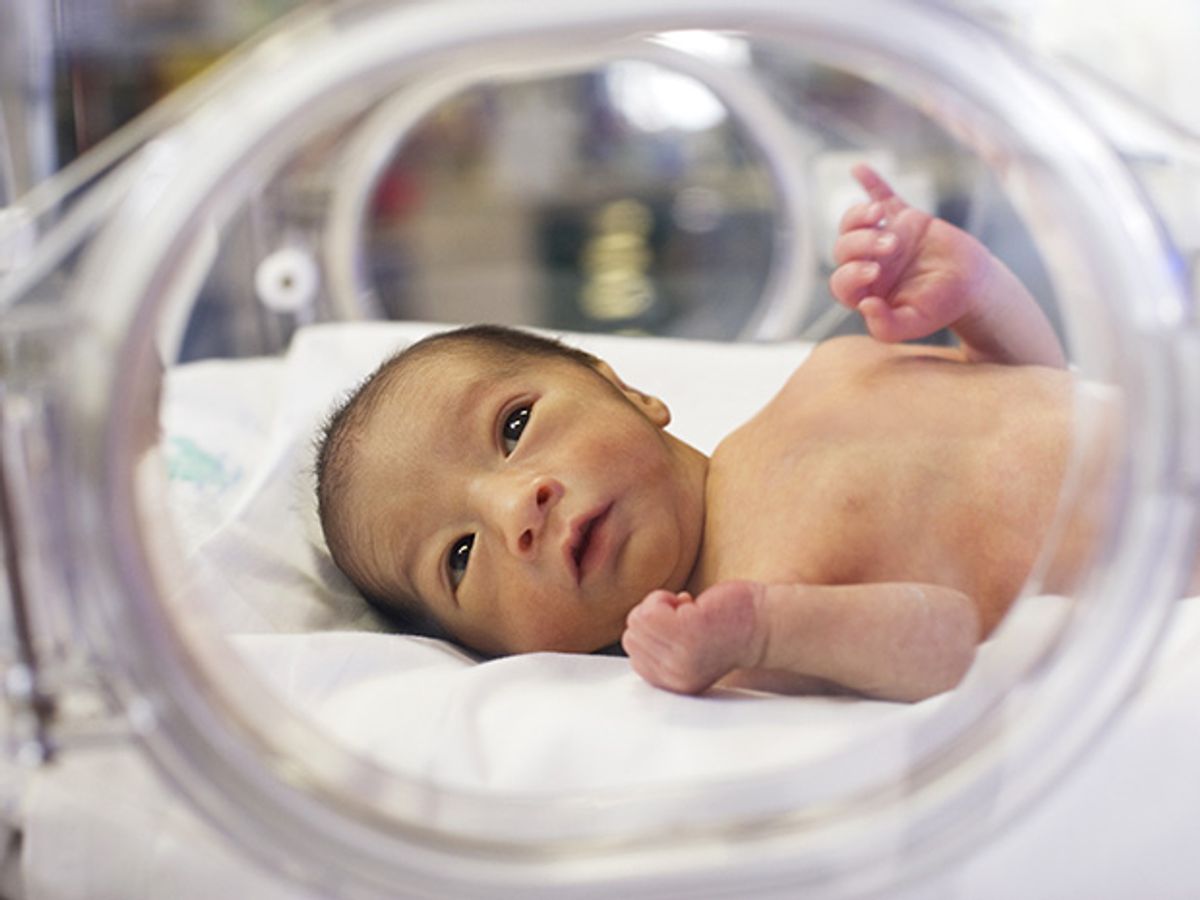In the intensive care unit for newborn babies, genetic disorders are the leading cause of death. But pediatricians typically can’t scan an infant’s entire genome and analyze it for clues quickly enough to make a difference in the baby’s treatment.
Forget the typical. Here is what’s now possible: In a record-breaking 26 hours, pediatricians can now scan and analyze the entire genome of a critically ill infant to find a diagnosis that can significantly alter the course of treatment. In a new study published in Genome Medicine, pediatricians explained how hardware and software specialized for genetic analysis can provide such fast and life-saving information. The key piece of technology: A processor from the company Edico Genome that’s designed to handle the big data of genetics.
Lead researcher Stephen Kingsmore, a pediatrician and genomics expert at Children’s Mercy Hospital in Kansas City, explains that doctors typically run targeted genetic tests for specific diseases if they have a good guess about what’s wrong with an infant. Such tests check a few specific spots on the genome, looking for disease-causing mutations. But with more than 8000 possible genetic diseases, such tests “weren’t really relevant to clinical care,” he tells IEEE Spectrum.
Whole-genome sequencing is a different matter entirely. These scans check for mutations at each of the 3.2 billion locations on the human genome. Remarkably, while it took $3 billion to sequence the first human genome, it can now be done for about $1000 a pop. That’s cheap enough to make economic sense in medical emergencies, like those encountered in a neonatal intensive care unit.
Kingsmore’s 26-hour diagnostic pipeline starts with the machines that do the brute-force work of sorting through an individual baby’s genome. This task is like putting together a 3-billion-piece jigsaw puzzle without looking at the picture on the box. Right now, Illumina HiSeq machines are the gold standard for this genetic sequencing. Kingsmore’s team got the sequencing time down to about 18 to 21 hours (reduced from 25 in their prior studies). But sequencing is “a pretty mature technology,” he says, and there weren’t huge speed gains to be had there.
The “remarkable gains,” Kingsmore says, came from the technology that analyzed each infant’s genome. That task is like taking the completed 3-billion-piece jigsaw puzzle and comparing it to the picture on the box, noting the roughly 5 million places where this imperfect puzzle deviates slightly from the generic image. Using Edico Genome’s DRAGEN processor, the researchers got this step down from 15 hours to 40 minutes.
Let’s emphasize that point: About 40 minutes after a sequencing machine finished its work, the researchers had a file listing all the mutations in a sick baby’s genome. After that, Kingsmore’s team used in-house software to search through the mutations for those associated with a disease that matched the baby’s symptoms. These programs “can almost make an instant diagnosis,” says Kingsmore, noting that Children’s Mercy is going to make its software packages available as freeware by the end of the year.
How can critically ill babies benefit from this speed? In a prior study, Kingsmore’s team used whole-genome sequencing for 35 sick infants, and diagnosed a genetic disease in 20 of those babies. In 13 cases, the doctors dramatically changed their treatment plans. For example, a baby with liver failure received the proper surgeries and pharmaceutical treatments based on the accurate diagnosis of a rare genetic disorder, and is now a healthy 2-year-old.
In other cases, the genome scan allowed doctors to rule out diseases, which Kingsmore says can be equally valuable. “Doctor always worry: ‘Did I miss something that was treatable?’” he says. But if a certain disease-associated mutation isn’t found, doctors needn’t give just-in-case treatments.
The DRAGEN processor delivered its critical speed gains to the hospital’s servers thanks to its architecture, which is designed to deal with genomic data, says Pieter van Rooyen, CEO of Edico Genome. The data comes from the sequencing machine in a particular file format, which is streamed efficiently through the chip without caching, says van Rooyen. Its algorithms are tailor-made to identify genetic mutations, and while these identification processes are ticking along the data is constantly being compressed and written to disk. “Everything takes place roughly at the same time,” van Rooyen tells Spectrum.
Van Rooyen predicts that in a few years, every infant born in the developed world will have its genome sequenced in the hospital. “It’s just a matter of time before clinical genomics will be with us everywhere,” he says. “It’s prudent to have the infrastructure ready.” He envisions the DRAGEN processor outputting its analysis directly into a patient’s electronic medical record, where actionable intelligence would be flagged for the physician.
Automating medicine to this degree, from genome sequencing to diagnosis, doesn’t alarm Kingsmore. In fact, he thinks it will be necessary if we want to make use of today’s best genetic technologies: “If we’re going to scale this, it has to be on the backs of smart machines,” he says. “We want to take humans out of the equation, because we’re the bottleneck.”
Eliza Strickland is a senior editor at IEEE Spectrum, where she covers AI, biomedical engineering, and other topics. She holds a master’s degree in journalism from Columbia University.





